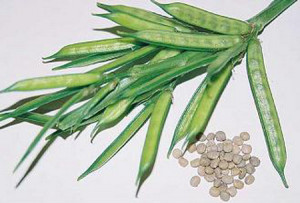 Through past decades, food products have been formulated and reformulated. This has been done so as to achieve good quality at lower cost. One of the ways to reduce cost is to replace high price thickeners with cheap substitutes. These include seaweed extracts and vegetable gums. Among them are carageenan, locust bean, xanthan and guar gums. What exactly is guar gum?
Through past decades, food products have been formulated and reformulated. This has been done so as to achieve good quality at lower cost. One of the ways to reduce cost is to replace high price thickeners with cheap substitutes. These include seaweed extracts and vegetable gums. Among them are carageenan, locust bean, xanthan and guar gums. What exactly is guar gum?
From Beans to Endosperm
Guar beans are harvested from the guar gum bush. It is grown in India and Pakistan. In the U.S., it is found in Texas. Gums are used to impart creaminess. They are thus added to dairy products. They also are used in place of ingredients that contain gluten. The best known food in which this has occurred is certain breads.
The endosperm is the desired part of the bean. It is the part that contains galactomannan. This disaccharide is composed of the sugars galactose and mannose. Interestingly, a similar combination of the two sugars is found in locust bean gum (and, for that manner, other gums). The difference lies in the ratio of the sugars.
Guar Gum – Health, Versatility, Flavor
The University of Arizona tells us sufferers of irritable bowel syndrome (IBS) need to avoid certain substances. These include “carrageenan and other gums such as guar, acacia, xanthan, and locust bean found in non-dairy milks, snack bars, yogurts and ice cream…”
Guar gum undergoes many chemical reactions. It can be modified into abundant derivatives useful for a host of purposes. Guar gum is even used in the cosmetics industry.
Clemson University says too much guar gum in baked goods imparts bitterness.
Note: You might also enjoy What is Carageenan
References:
- U.S. Securities & Exchange Commission: Guar
- University of Arizona: Campus Health: Irritable Bowel Syndrome – Diet and Stress
- Clemson University: Culinary Nutrition News: Gums and Starches
